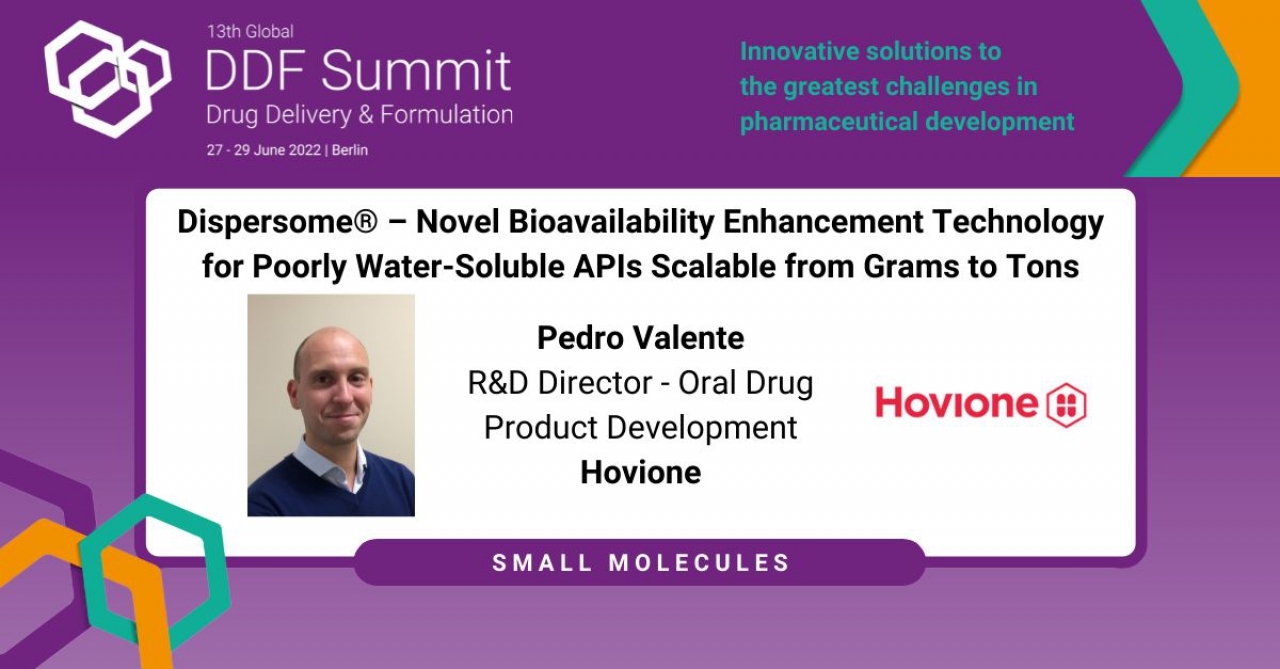Press Room
13th Global DDF Summit - Drug Delivery Formulation
On June 27th, don’t miss the Dispersome® session

|
Pedro Valente R&D Director - Oral Drug Product Development, Hovione |

|
Korbinian Löbmann CSO, Zerion Pharma |
- Day 1 - June 27th, Small Molecules Stream
- 12:10 PM - 12:40 PM - Solution Spotlights
- 'Dispersome® – Novel Bioavailability Enhancement Technology for Poorly Water-Soluble APIs Scalable from Grams to Tons'
The Dispersome® technology is a novel solubility enhancing approach that is based on using the protein beta-lactoglobulin (BLG) as novel pharmaceutical excipient. By mixing a drug compound with this by-product from cheese production, one obtains a unique amorphous composition of small molecule drugs and proteins.
The technology has been shown to dramatically increase the solubility and bioavailability of poorly soluble drugs, which will be demonstrated by selected case studies in this presentation. These co-amorphous drug-BLG formulations can be manufactured by Spray Drying which is a continuous and scalable manufacturing process commonly used in the pharmaceutical industry. A roadmap of the Spray Drying development process will be presented, with all the main steps to bring these new formulations from the laboratory to production scale suitable for Metric Tons.
A focus will be given to the importance of lab-scale familiarization and supporting studies throughout the development process and how computational, statistical tools combined with prior knowledge can be capitalized to reduce risk while maximizing time and resources.
Why you should attend:
- Learn more about innovation in bioavailability enhancement using BLG
- Learn how these formulations can be scaled-up to meet commercial supply demand
For more information on our session please visit the DDFevent.com


